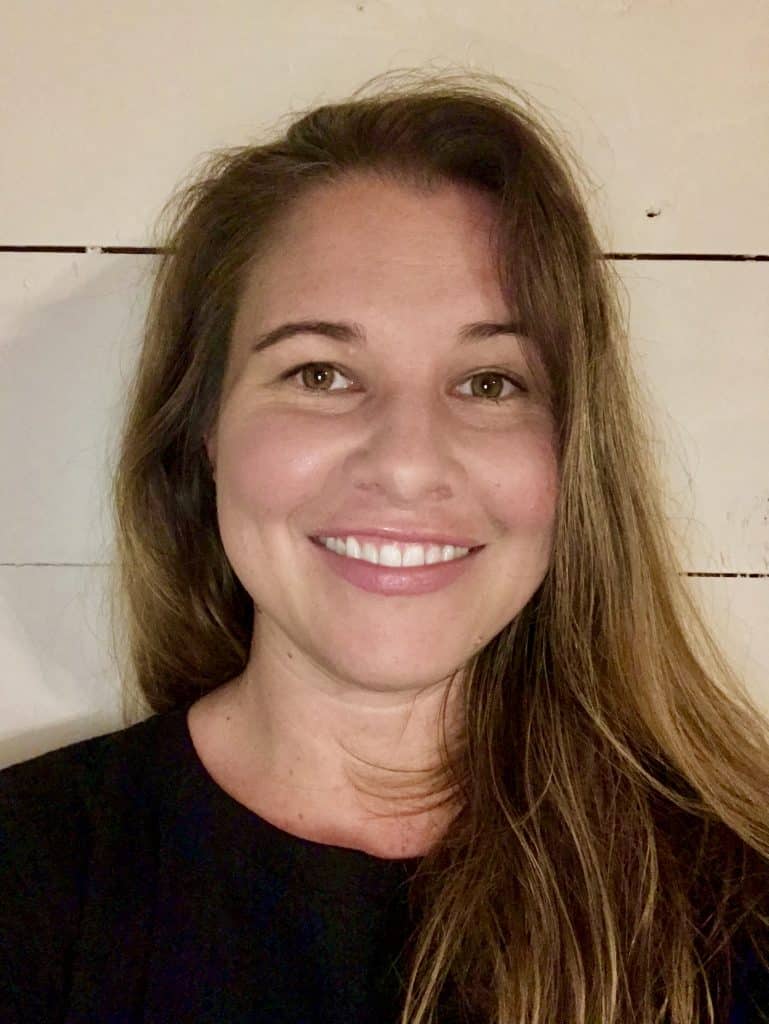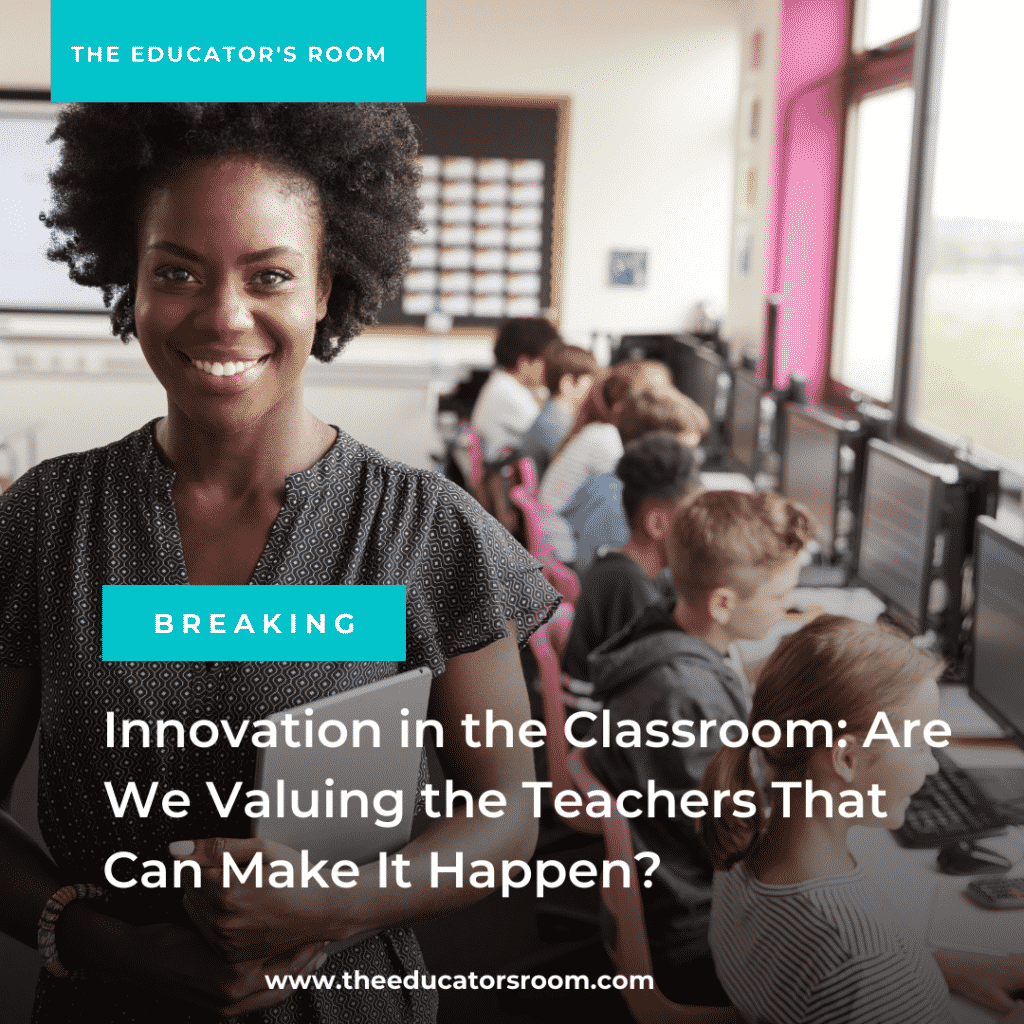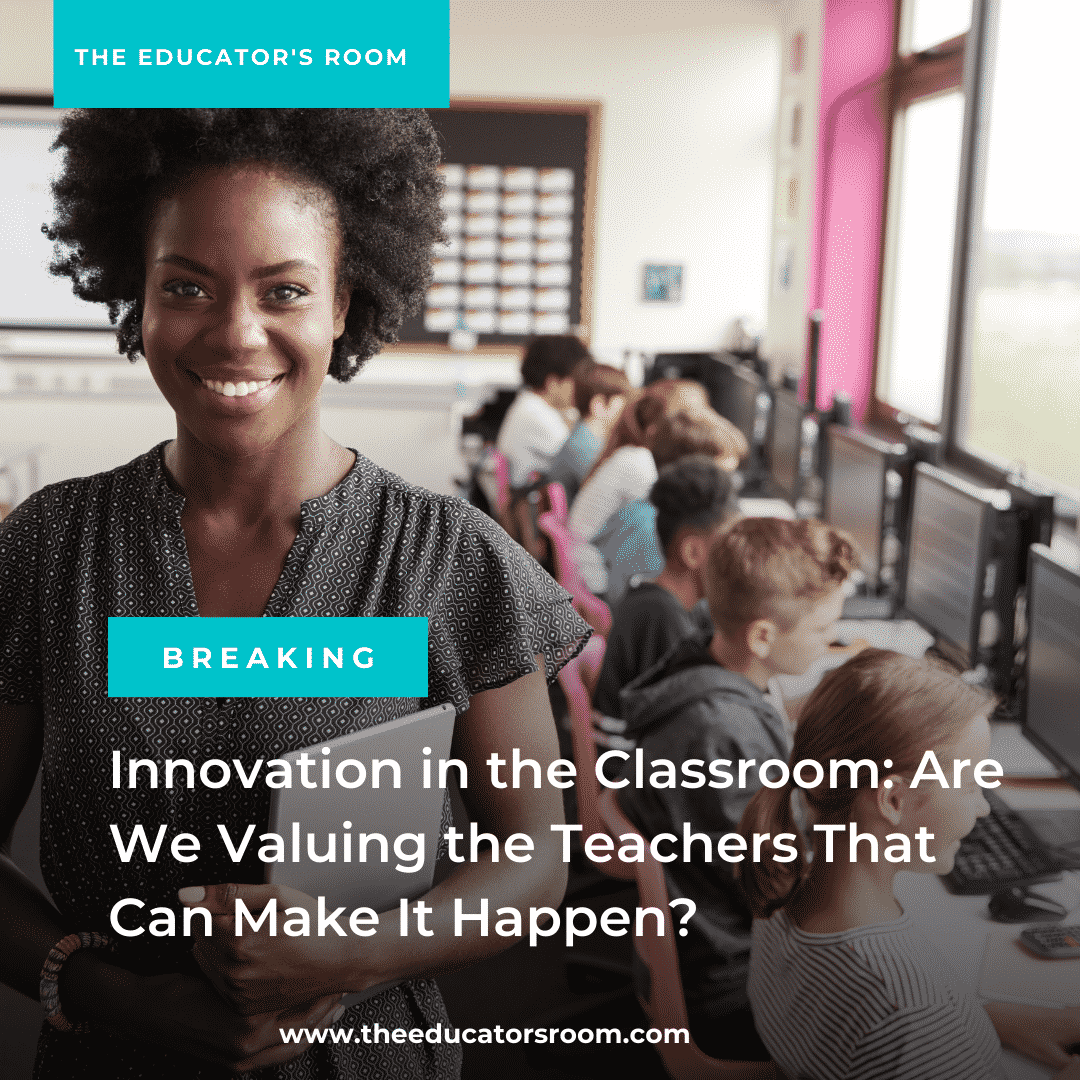Christy Sutton is an educator with over fifteen years of classroom experience. She holds a B.A. in Communication Disorders and Deaf Education and a M.A. in Instructional Design. Christy is passionate about human-centered approaches to education, individualized learning environments, and teacher retention. She is currently an intervention teacher for middle and high school students. She lives in Tennessee with her husband, three sons, and two spoiled dogs, You can reach her at ChristySutton27@gmail.com or through Twitter @ChristySutton27

I once spoke at a conference on the subject of student-centered learning. I watched as bright-eyed teachers filled the room, smiled as I saw them nodding along and writing vigorously in their free conference swag notebooks, and sat in awe as they shared their innovative ideas about human-centered approaches to education. These teachers gave up their Saturday, willingly and excitedly, as they defied what was and focused on what could be. This was my tribe. In them, the teachers existed that could change education to fit the world around us.
As the session came to a close, I heard the comment I often heard at conferences such as this. It was this comment I always feared, for both its truth and its lie.
“It’s too bad we will never actually be allowed to do any of this in our classrooms.”
These were the visionary teachers willing to do the work but felt tied by the constraints of the educational world around them. This phrase always made me imagine a world in which these teachers had a true voice in education reform. The benefits to educators, administrators, and students would be tremendous. These are the educators we would stand in line for, in hopes that our children could be in their class. These teachers are the best of education, the favorite teacher, the inspirer, the coach, the game-changer, and they are leaving. The education they envision and the one they are handed are too different for many of them.
John Hattie defines Collective Teacher Efficacy as the “collective belief of teachers in their ability to positively affect students”, but what is it called when teachers believe in their own collective abilities to create innovative learning environments for students, but are not given the space or tools to do so (Hattie, 2009). Are our current tactics actually causing the deficit of collective teacher efficacy in our motivated, student-centered educators?
Teachers typically enter education to make a difference in the lives of children. However, American culture has historically undervalued educators. The Teaching and Learning International Survey, published by the National Center for Educational Statistics (2019), found that only 36 percent of teachers believed they were valued in American culture. A study by the University of Missouri noted that 93 percent of elementary teachers felt they were at a high-stress level at their jobs (Herman et al., 2017). High stress and low value do not equal retain ability. With approximately eight percent of teachers leaving the profession each year, and many more indicating they are considering a career change, the need to value teachers and promote teacher efficacy is at an all-time high (COE – Teacher Turnover: Stayers, Movers, and Leavers, 2015).
If asked if classrooms should be more innovative and human-centered, most would agree that they should. The Centre for Educational Research and Innovation published a survey entitled Measuring Innovation in Education. In their findings, the researchers state,” The ability to measure innovation is essential to the improvement of education.” (Lancrin et al., 2014). Still, being essential does not equate to being easy. Educational innovation and human-centered approaches are difficult to measure and even more difficult to teach in a professional development setting. They are individualized within each district, each school, each classroom, and each student. I once had an educational leader that defined these approaches as “I’ll know them when I see them.” We are dependent on our teachers who possess the ability to implement these ideas to set an example for those who can not quite see it…yet. It is important to know who these teachers are and what they are capable of if given the freedom and opportunity.
We know educator self-efficacy has a positive correlation to student success. After all, it holds a 1.57 effect size (Hattie, 2009). It also has a positive correlation to teacher retention. Educators who have a high level of self-efficacy are more likely to continue in their career in education. Conversely, educators with low self-efficacy are more likely to leave education (Blackburn et al., 2017). Still, in a century centered around innovation, adaptability, and creation, our schools are continuing to promote scripted curriculum, whole group professional development, and deficit-based evaluation systems. This ‘one-size-fits-all’ approach to educators allows us to overlook the teachers who show up at conferences on Saturdays as they seek new approaches that contribute to student success.
Collective and individual self-efficacy increases when we create environments where teachers feel supported and valued and when they have a voice in promoting the success of students. I have developed the C.L.I.C.K Method as a guide for creating learning environments that support the teacher and promote belief in his or her ability to positively affect students.
C.L.I.C.K. Method
Create opportunities for educators to feel valued and comfortable openly discussing their desired roadways to student success. These need to be safe environments where “what if..” and “why not” questions are asked. This is not the place to bring up roadblocks. However, any potential roadblocks can be met with “How can we overcome _____.”. Never say the word ‘impossible’ in these meetings. Let teachers brainstorm and feel free to share any ideas they have to benefit student achievement.
Listen. This is not the same as “nod and smile”. This is not the time to multi-task. I once was led by a brilliant educator, but what made her stand out was her ability to listen. She made each person who entered her room feel important and heard. Engage with the speaker, ask questions, and encourage new ideas. Education needs as many vantage points as it can get in order to meet the needs of the vast variety of students. Embrace the viewpoints around you.
Identify and Invite. We identify through knowledge. Take the time to get to know the people on your team, in your school, and in your district. Define people by their strengths and then INVITE them into positions and situations where those strengths can be displayed. This will allow educators to see and use their own strengths daily.
Collaborate. Relationships are the core of increasing teacher efficacy. Working together allows educators to brainstorm new ideas while feeling valued and capable of contributing to student success. Collaboration should be encouraged throughout each and every day. If you have a teacher who is strong in a certain area, have them help someone needing support. Stop and talk to teachers in the hallway, start a book club or idea club, and/or create clear guidelines for collaboration in team meetings (think: positivity, everyone speaks, etc.). When we create a positive educational environment, positive things happen.
Keep. Advocate for teachers each day. Start each meeting with ‘I Can’ statements. Despite the paperwork, pandemic, and evaluation systems, concentrate on what you can do to create the best possible educational experience for students. KEEP a positive environment, a clear vision, and most importantly, KEEP those innovative teachers in education. The students need them now more than ever.
Within schools, the CLICK process needs to begin at the interview stage of the educator’s journey. We often say when educators leave the profession, they are ‘burnt-out’. This statement seems to blame the educator, making it sound as though they had to leave the kitchen because they could not handle the heat. However, it also supports another idea. It indicates the educator was once on fire, passionate about education and his or her role within it. Instead of asking the same questions over and over again in the interview process, ask applicants about their dreams for education, how they would most like to teach their subject matter, or what an innovative classroom looks like to them. The interview is the first chance to create an opportunity for the educator to feel heard and valued within your building. When you have someone new on your team, do not guide them into your way of doing it. Talk to them and understand how they can actively contribute using their own strengths and ideas.
Teachers who are valued are motivated. Within my own professional experience, I have seen how much the environment impacts student success. Teachers that feel heard and seen show up each day ready to do whatever it takes. Teachers that feel overwhelmed and unnoticed often feel like what they do does not make a difference. Collective teacher efficacy has a positive correlation to successful educational experiences for teachers and students.
Collective teacher efficacy is each of our responsibilities. Creating environments that support educators and promote student success is essential to moving education forward. We all have the opportunity to be that change if we decide to take it.

References
Blackburn, J., Bunch, J., Haynes, C. (2017). Assessing the Relationship of Teacher Self-Efficacy, Job Satisfaction, and Perception of Work-Life Balance of Louisiana Agriculture Teachers. Journal of Agricultural Education 14 Volume 58, Issue 1.
https://files.eric.ed.gov/fulltext/EJ1138978.pdf
COE – Teacher Turnover: Stayers, Movers, and Leavers. (2015, November). NCES. https://nces.ed.gov/programs/coe/indicator/slc
Hattie, J. (2009).Visible Learning: A synthesis of over 800 meta-analyses relating to achievement, Routledge. London
Herman, K., Rosa, J., Reinke, W. (2017) Empirically Derived Profiles of Teacher Stress, Burnout, Self-Efficacy, and Coping and Associated Student Outcomes. Journal of Positive Behavior Interventions https://doi.org/10.1177/1098300717732066
Teaching and Learning International Survey (2018). National Center for Education Statistics. https://nces.ed.gov/surveys/talis/talis2018/





I think that we need to do more than just Keep but rather address the paperwork head on. Second only to pay, working conditions significantly subtract from teacher efficacy.